Falling Sphere Velocity according to Stokes' Law
Context: Studying Stokes' LawFormula expressing the drag force on a sphere moving in a viscous fluid at low velocity..
In fluid mechanics, understanding the motion of an object through a liquid is fundamental. When a small spherical bead is dropped into a viscous fluid like glycerin or oil, it initially accelerates due to gravity. However, two forces oppose this motion: Archimedes' PrincipleThe upward buoyant force exerted on a body immersed in a fluid. It is equal to the weight of the displaced fluid. (buoyancy) and the viscous drag force, described by Stokes' Law. This exercise will guide you in determining when these forces balance, reaching a constant falling speed called terminal velocity.
Pedagogical Note: This exercise will help you apply fundamental principles of fluid mechanics (weight, buoyancy, viscosity) to analyze a practical, concrete case and understand the balance of forces on an object moving through a fluid.
Learning Objectives
- Understand and quantify the three main forces acting on a sphere falling in a fluid.
- Know how to apply Stokes' Law to calculate the viscous drag force.
- Master the method for determining the terminal velocity by establishing the force equilibrium.
Problem Data
Technical Data
| Characteristic | Value |
|---|---|
| Sphere Material | Steel |
| Fluid | Glycerin |
| Flow Regime | Laminar (low Reynolds number) |
Diagram of Forces on the Falling Sphere
| Parameter Name | Symbol | Value | Unit |
|---|---|---|---|
| Sphere diameter | \(d\) | 2 (approx 0.0787 in) | \(\text{mm}\) |
| Sphere density (steel) | \(\rho_s\) | 7850 (approx 490 lb/ft³) | \(\text{kg/m}^3\) |
| Fluid density (glycerin) | \(\rho_f\) | 1260 (approx 78.6 lb/ft³) | \(\text{kg/m}^3\) |
| Fluid dynamic viscosity | \(\eta\) | 1.41 (approx 0.0295 lbf·s/ft²) | \(\text{Pa} \cdot \text{s}\) |
| Acceleration due to gravity | \(g\) | 9.81 (approx 32.2 ft/s²) | \(\text{m/s}^2\) |
Questions to Solve
- Calculate the sphere's radius and volume in SI units.
- Determine the value of the sphere's weight.
- Calculate the value of the buoyant force acting on the sphere.
- Establish the force equilibrium equation when the sphere reaches its terminal velocity.
- Deduce and calculate the terminal velocity (\(v_t\)) of the sphere.
Fundamentals of Fall in a Viscous Fluid
To solve this exercise, it's essential to understand the three forces acting on the sphere: its weight, the buoyant force, and the viscous drag force.
1. Weight and Buoyant Force
The weight (\(F_g\)) is the gravitational force pulling the sphere down. The buoyant force (\(F_b\)) is the force exerted by the fluid, pushing the sphere up.
\[ F_g = m \cdot g = (\rho_s \cdot V) \cdot g \]
\[ F_b = \rho_f \cdot V \cdot g \]
Where \(\rho_s\) and \(\rho_f\) are the densities of the sphere and the fluid, \(V\) is the sphere's volume, and \(g\) is the acceleration due to gravity.
2. Stokes' Law (Drag Force)
When a sphere moves slowly through a viscous fluid (laminar flow), it experiences a resistance or drag force (\(F_d\)) that opposes the motion. This force is proportional to the fluid's viscosity \(\eta\), the sphere's radius \(r\), and its velocity \(v\).
\[ F_d = 6 \pi \eta r v \]
This law is only applicable for a low Reynolds number (\(Re < 1\)).
Solution: Falling Sphere Velocity (Stokes' Law)
Question 1: Calculate the sphere's radius and volume in SI units.
Principle
The first step is to convert all dimensions into the International System (meters) to ensure consistency, then apply the geometric formula for the volume of a sphere.
Mini-Lesson
Dimensional homogeneity is a key concept in physics. All equations must be consistent in terms of units. The International System (SI) provides a standard framework (meter for length, kilogram for mass, second for time) to ensure this consistency.
Pedagogical Note
Always make it a habit to start a physics problem by converting all data into SI units. This simple initial step prevents the vast majority of calculation errors.
Standards
Scientific and engineering calculations are based on the International System of Units (SI), defined and maintained by the International Bureau of Weights and Measures (BIPM), and formalized by the ISO 80000 standard.
Formula(s)
Volume of a sphere
Assumptions
To apply this formula, we assume the sphere is geometrically perfect.
Given Data
The only data needed for this step is the sphere's diameter.
| Parameter | Symbol | Value | Unit |
|---|---|---|---|
| Sphere diameter | \(d\) | 2 | \(\text{mm}\) |
Tips
To quickly convert volumes, remember that \(1 \text{ mm}^3 = (10^{-3} \text{ m})^3 = 10^{-9} \text{ m}^3\). An error of a factor of 1000 in length becomes an error of a factor of 1 billion in volume!
Diagram (Before calculations)
Sphere Dimensions
Calculation(s)
Step 1: Calculate the radius in meters
We start by finding the radius \(r\) from the diameter \(d\). The formula is:
Applying the given diameter (\(d = 2 \text{ mm}\)):
Next, we convert this radius to meters (the SI unit) by dividing by 1000:
Step 2: Calculate the volume in m³
Now, we use the geometric formula for the volume of a sphere:
We substitute the radius \(r\) with its value in meters (\(0.001 \text{ m}\)) to get the volume in m³:
This volume will be used to calculate the weight and buoyant force.
Diagram (After calculations)
The diagram below shows the sphere with its calculated volume, an intrinsic geometric property essential for mass and buoyancy calculations.
Sphere Volume
Reflections
The resulting volume is extremely small, as expected for a 2 mm diameter sphere. Using scientific notation (\(10^{-9}\)) is essential for handling such numbers readably and practically.
Points to Watch
The two most common errors here are: 1) Forgetting to divide the diameter by two to get the radius. 2) Making a mistake when converting millimeters to meters (\(1 \text{ m} = 1000 \text{ mm}\)).
Key Takeaways
- Converting units to SI is the first step in any physics calculation.
- The formula for the volume of a sphere is \(V = \frac{4}{3} \pi r^3\).
Did you know?
Archimedes, who discovered the principle of buoyancy, was also the first to rigorously derive the formula for the volume of a sphere. He was so proud of this discovery that he asked for a sphere inscribed in a cylinder to be engraved on his tomb.
FAQ
Final Result
Try it yourself
What would be the volume of a 4 mm diameter sphere?
Question 2: Determine the value of the sphere's weight.
Principle
The weight is the gravitational force acting on the sphere. It is calculated by multiplying the sphere's mass by the acceleration due to gravity. The mass is obtained by multiplying the density of steel by the sphere's volume calculated earlier.
Mini-Lesson
It is crucial to distinguish between mass (symbol \(m\), unit kg), which is a measure of an object's amount of matter and is constant everywhere, and weight (symbol \(F_g\) or \(P\), unit N), which is the force exerted on that mass by a gravitational field. An object's weight therefore changes depending on the celestial body it is on (Earth, Moon, etc.).
Pedagogical Note
To obtain a weight in Newtons (N), the SI unit of force, it is imperative that the density is in kg/m³, the volume in m³, and the acceleration due to gravity in m/s². Always check this consistency.
Standards
The Newton (N) is the derived SI unit of force. It is defined as the force required to give a mass of one kilogram an acceleration of one meter per second squared (\(1 \text{ N} = 1 \text{ kg} \cdot \text{m/s}^2\)).
Formula(s)
Assumptions
- The acceleration due to gravity \(g\) is considered constant and equal to 9.81 m/s².
- The sphere's material (steel) is considered perfectly homogeneous, so its density is uniform.
Given Data
| Parameter | Symbol | Value | Unit |
|---|---|---|---|
| Density (steel) | \(\rho_s\) | 7850 | \(\text{kg/m}^3\) |
| Sphere volume | \(V\) | \(4.189 \times 10^{-9}\) | \(\text{m}^3\) |
| Acceleration due to gravity | \(g\) | 9.81 | \(\text{m/s}^2\) |
Tips
Before calculating, make a quick estimate: the volume is on the order of \(4 \times 10^{-9}\) m³, the density is on the order of \(8000\) kg/m³. The mass will therefore be around \(32 \times 10^{-6}\) kg. The weight will be around \(32 \times 10^{-6} \times 10 \approx 3.2 \times 10^{-4}\) N. This helps verify the order of magnitude of the final result.
Diagram (Before calculations)
Weight Force
Calculation(s)
Step 1: Calculate the mass (m) of the sphere
First, we calculate the sphere's mass by multiplying its density (\(\rho_s\)) by its volume (\(V\)):
Applying the data for steel and the volume from Question 1:
Step 2: Calculate the weight (Fg) of the sphere
The weight (\(F_g\)) is this mass (\(m\)) multiplied by the acceleration due to gravity (\(g\)):
Applying the values:
We can also combine the two steps into one formula (\(F_g = \rho_s \cdot V \cdot g\)):
This is the force pulling the sphere downward.
Diagram (After calculations)
The diagram illustrates the calculated weight force, acting vertically downward from the sphere's center of gravity.
Weight Value
Reflections
The weight is a very small force, on the order of tenths of a millinewton. This is the force that initiates the sphere's downward motion. Without gravity, there would be no fall.
Points to Watch
Be careful not to use the fluid's density (\(\rho_f\)) instead of the solid's density (\(\rho_s\)) when calculating weight. The weight depends on the object's material, not the medium it is in.
Key Takeaways
An object's weight is the gravitational force it experiences. It is calculated by multiplying the object's density, its volume, and the acceleration due to gravity: \(F_g = \rho_{\text{object}} \cdot V \cdot g\).
Did you know?
The value of the acceleration due to gravity \(g\) is not the same everywhere on Earth. It is slightly weaker at the equator than at the poles due to Earth's rotation and its slight flattening.
FAQ
Final Result
Try it yourself
What would be the weight of this same sphere on the Moon, where \(g \approx 1.62 \text{ m/s}^2\) ?
Question 3: Calculate the value of the buoyant force acting on the sphere.
Principle
The buoyant force (Archimedes' principle) is an upward force equal to the weight of the volume of fluid displaced by the sphere. It is calculated in the same way as the weight, but using the fluid's density (glycerin) instead of the sphere's density.
Mini-Lesson
Archimedes' principle states, "Any body completely or partially submerged in a fluid at rest is acted upon by an upward, or buoyant, force the magnitude of which is equal to the weight of the fluid displaced by the body." This is the force that makes objects less dense than the fluid float.
Pedagogical Note
The formula for buoyant force is structurally identical to the formula for weight. The only, and crucial, difference is the use of the fluid's density (\(\rho_f\)) and not the object's (\(\rho_s\)). Visualize "replacing" the object with the same volume of fluid and then calculating the weight of that fluid.
Standards
This is not a specific regulation, but a fundamental principle of fluid physics.
Formula(s)
Assumptions
- The sphere is fully submerged in the fluid.
- The fluid (glycerin) is considered homogeneous and incompressible.
Given Data
| Parameter | Symbol | Value | Unit |
|---|---|---|---|
| Density (glycerin) | \(\rho_f\) | 1260 | \(\text{kg/m}^3\) |
| Sphere volume | \(V\) | \(4.189 \times 10^{-9}\) | \(\text{m}^3\) |
| Acceleration due to gravity | \(g\) | 9.81 | \(\text{m/s}^2\) |
Tips
Even before calculating, compare the densities. Here, \(\rho_s (7850) > \rho_f (1260)\). You can therefore predict that the weight \(F_g\) will be greater than the buoyant force \(F_b\), and the object will sink. This is an essential consistency check.
Diagram (Before calculations)
Buoyant Force
Calculation(s)
Step 1: Calculate the mass of the displaced fluid (\(m_f\))
The buoyant force is the weight of the displaced fluid. We first calculate the mass of this fluid (\(m_f\)) by multiplying the fluid's density (\(\rho_f\)) by the sphere's volume (\(V\)):
Applying the data for glycerin:
Step 2: Calculate the buoyant force (Fb)
The buoyant force (\(F_b\)) is the weight of this displaced fluid mass (\(m_f \cdot g\)):
Applying the values:
As with the weight, we can combine this into one formula (\(F_b = \rho_f \cdot V \cdot g\)):
This is the force pushing the sphere upward.
Diagram (After calculations)
This diagram shows the buoyant force, directed upward, with its calculated numerical value.
Buoyant Force Value
Reflections
The buoyant force is about 6 times smaller than the sphere's weight. The initial resultant force (weight - buoyancy) is therefore directed downward, confirming that the sphere will indeed fall.
Points to Watch
The classic error is using the wrong density. Repeat to yourself: "Buoyant force = weight of the DISPLACED FLUID." This helps in choosing the correct density (\(\rho_f\)).
Key Takeaways
The buoyant force opposes weight and depends on the object's volume and the density of the surrounding fluid: \(F_b = \rho_{\text{fluid}} \cdot V \cdot g\).
Did you know?
Legend has it that Archimedes had this revelation while taking a bath and watching the water overflow. He supposedly ran naked through the streets shouting "Eureka!" ("I have found it!").
FAQ
Final Result
Try it yourself
What would the buoyant force be if the sphere were submerged in water (\(\rho_f \approx 1000 \text{ kg/m}^3\))?
Question 4: Establish the force equilibrium equation when the sphere reaches its terminal velocity.
Principle
Terminal velocity is reached when the sphere's acceleration becomes zero. According to Newton's Second Law, this means the vector sum of the forces acting on the sphere is zero. The weight (pulling down) is then balanced by the sum of the buoyant force and the drag force (pushing up).
Mini-Lesson
Newton's Second Law (Fundamental Principle of Dynamics) is written as \(\sum \vec{F} = m\vec{a}\). When the velocity becomes constant, the acceleration \(\vec{a}\) is zero. The equation thus becomes \(\sum \vec{F} = \vec{0}\). This means the system is in dynamic equilibrium: it is moving, but at a constant velocity.
Pedagogical Note
A free-body diagram is your best friend for this type of problem. Draw the object and represent all forces acting on it with vectors. Choose an axis (e.g., vertically downward) and project all forces onto that axis. The sum of the components must be zero at equilibrium.
Standards
This reasoning is a direct application of the Fundamental Principle of Dynamics (Newton's Second Law), one of the cornerstones of classical mechanics.
Formula(s)
Projecting onto a vertical axis pointing downward:
At terminal velocity, \(a_z = 0\), so:
Assumptions
The main assumption is that the sphere has indeed reached a state of equilibrium where its velocity is no longer changing. We assume the fluid column is tall enough for this state to be reached.
Tips
Always think of equilibrium as a "balance" of forces. What pulls down must equal what pushes up for the motion to be stable (constant velocity).
Diagram (Before calculations)
Free-Body Diagram
Calculation(s)
This step is purely algebraic. We apply Newton's Second Law on a vertical axis \(z\) pointing downward.
We project the three forces (\(F_g\), \(F_b\), \(F_d\)) onto this \(z\) axis:
- Weight (\(F_g\)) is in the direction of the axis: \(+F_g\)
- Buoyant Force (\(F_b\)) opposes the axis: \(-F_b\)
- Drag Force (\(F_d\)) opposes the motion (downward), so it points upward, opposing the axis: \(-F_d\)
The equation of motion is therefore:
At terminal velocity, by definition, the velocity is constant. The acceleration \(a_z\) is therefore zero:
Rearranging the terms, we get the equilibrium equation: the downward forces equal the upward forces.
Diagram (After calculations)
The diagram below represents the force equilibrium. The length of the Weight vector (Fg) is visually equal to the sum of the lengths of the Buoyant Force (Fb) and Drag Force (Fd) vectors, illustrating the equation \(F_g = F_b + F_d\).
Force Equilibrium at Terminal Velocity
Reflections
This equilibrium condition is central to many physics problems, not just in fluid mechanics. It represents a stable state toward which the system tends. Understanding how to set up this equation is a fundamental skill.
Points to Watch
The most serious error would be to orient one of the forces incorrectly (e.g., drawing drag in the direction of motion) or to get the signs wrong when projecting onto the axis, which would lead to a physically incorrect equation like \(F_g + F_d = F_b\).
Key Takeaways
At terminal velocity, acceleration is zero, and the sum of forces is zero. For a vertical fall, this translates to: Driving Force (Weight) = Sum of Resistive Forces (Buoyancy + Drag).
Did you know?
Skydivers don't reach zero falling speed, but a much lower terminal velocity (about 12-15 mph with the parachute open) thanks to the huge drag force generated by the canopy. They use this exact principle of force equilibrium to land safely.
FAQ
Final Result
Try it yourself
What would the equilibrium equation be for an air bubble rising in water at a constant speed? (Hint: weight is negligible and drag opposes the upward motion).
Question 5: Deduce and calculate the terminal velocity (\(v_t\)) of the sphere.
Principle
Using the equilibrium equation established in the previous question and plugging in the Stokes' Law expression for the drag force, we can algebraically isolate the velocity \(v_t\) to find its numerical value.
Mini-Lesson
Solving many physics problems follows this process: 1) Identify relevant physical principles (here, Newton's Second Law). 2) Set up the literal equations (\(F_g=F_b+F_d\)). 3) Substitute known laws (\(F_d=6\pi\eta r v_t\)). 4) Isolate the unknown (\(v_t\)). 5) Perform the numerical calculation.
Pedagogical Note
It is often safer and more instructive to do the calculations in two steps: first, calculate the numerical value of the drag force \(F_d = F_g - F_b\), then use this value to find \(v_t\). Using the final combined formula directly is faster but increases the risk of calculation error and hides the intermediate logic.
Standards
No specific standard, this is an application of fundamental formulas.
Formula(s)
Starting Equation
Final Formula for Velocity
Assumptions
We assume Stokes' Law is applicable, which means the flow is laminar. After calculating the velocity, we should check that the Reynolds number \(Re = \frac{\rho_f v_t d}{\eta}\) is indeed much less than 1.
Given Data
| Parameter | Symbol | Value | Unit |
|---|---|---|---|
| Weight Force | \(F_g\) | \(3.225 \times 10^{-4}\) | \(\text{N}\) |
| Buoyant Force | \(F_b\) | \(0.518 \times 10^{-4}\) | \(\text{N}\) |
| Dynamic Viscosity | \(\eta\) | 1.41 | \(\text{Pa} \cdot \text{s}\) |
| Sphere radius | \(r\) | 0.001 | \(\text{m}\) |
Tips
Check the units: The numerator (\(F_d\)) is in N. The denominator (\(\eta \cdot r\)) is in \((\text{Pa} \cdot \text{s}) \cdot \text{m} = (\frac{\text{N}}{\text{m}^2} \cdot \text{s}) \cdot \text{m} = \frac{\text{N} \cdot \text{s}}{\text{m}}\). The ratio \(\frac{\text{N}}{\frac{\text{N} \cdot \text{s}}{\text{m}}} = \frac{\text{m}}{\text{s}}\) correctly gives a velocity. This dimensional analysis helps validate the formula.
Diagram (Before calculations)
The starting point for the calculation is the free-body diagram at equilibrium, where the sum of forces is zero. It is from this configuration that we will isolate the velocity.
Force Equilibrium
Calculation(s)
Step 1: Isolate the terminal velocity (\(v_t\))
We start from the equilibrium equation found in Question 4:
We substitute \(F_d\) with its expression from Stokes' Law, where \(v\) becomes the terminal velocity \(v_t\):
We isolate the term containing \(v_t\):
Finally, we express \(v_t\) by dividing by the Stokes term:
Step 2: Calculate the drag force (Numerator)
The numerator \(F_g - F_b\) represents the drag force \(F_d\) at equilibrium. We use the values calculated in Questions 2 and 3:
Step 3: Calculate the Stokes term (Denominator)
The denominator is the term \(6 \pi \eta r\). We use the values for viscosity (\(\eta\)) and radius (\(r\)):
Step 4: Final calculation of terminal velocity
We divide the numerator (Step 2) by the denominator (Step 3) to find the velocity:
Rounding, we get the final terminal velocity:
Diagram (After calculations)
Velocity Evolution Over Time
Reflections
A velocity of 0.0102 m/s, or about 1 cm/s, is very slow. This low speed is consistent with the high viscosity of glycerin. The Reynolds number is \(Re = (1260 \times 0.0102 \times 0.002) / 1.41 \approx 0.018\), which is much less than 1. The assumption of laminar flow and the use of Stokes' Law are therefore perfectly justified.
Points to Watch
A common error is forgetting the \(6\pi\) factor in the Stokes formula. Also, ensure all numerical values inserted are in SI units, especially the radius in meters.
Key Takeaways
The terminal velocity in a Stokes regime depends directly on the density difference, the square of the radius, and inversely on the fluid's viscosity. \(v_t \propto \frac{(\rho_s - \rho_f) r^2}{\eta}\).
Did you know?
Millikan's oil drop experiment, performed in 1909, used this same principle. By measuring the terminal velocity of tiny electrified oil drops, and balancing the forces (weight, buoyancy, drag, and electric force), Robert Millikan was able to determine the charge of the electron with high precision, earning him the Nobel Prize in Physics in 1923.
FAQ
Final Result
Try it yourself
What would the terminal velocity be if we used a fluid with half the viscosity (\(\eta = 0.705 \text{ Pa} \cdot \text{s}\))?
Interactive Tool: Fall Simulator
Use the sliders to see how the sphere's radius and the fluid's viscosity influence the terminal velocity. Other parameters (densities, gravity) are fixed as per the exercise data.
Input Parameters
Key Results
Final Quiz: Test Your Knowledge
1. Which two forces oppose the weight of a sphere falling in a fluid?
2. Stokes' Law is a good approximation for the drag force when...
3. If the sphere's radius is doubled (\(r \rightarrow 2r\)), by what factor is its terminal velocity multiplied?
4. What would happen if the sphere's density were less than the fluid's density (\(\rho_s < \rho_f\))?
5. In the International System (SI), the unit for dynamic viscosity (\(\eta\)) is the...
- Stokes' Law
- A law of fluid mechanics describing the viscous drag force on a sphere moving at low velocity in a fluid. The force is \(F_d = 6 \pi \eta r v\).
- Buoyant Force
- The upward force experienced by a body immersed in a fluid, equal to the weight of the fluid volume displaced by the body.
- Dynamic Viscosity
- A measure of a fluid's resistance to flow. The higher the viscosity, the 'thicker' the fluid and the more it resists motion.
- Reynolds Number (Re)
- A dimensionless number used to predict fluid flow patterns. A low Re (\(<1\)) indicates laminar, viscous flow, while a high Re indicates turbulent flow.
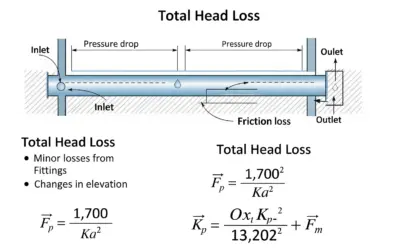
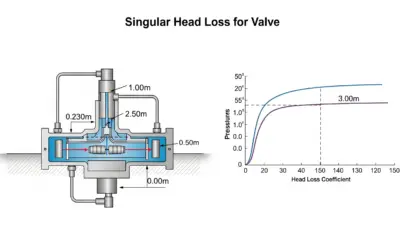
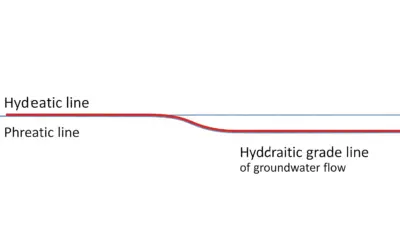



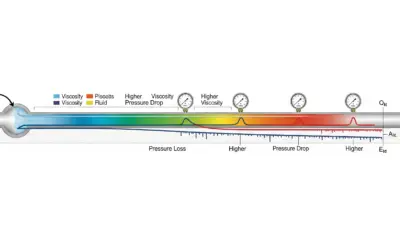

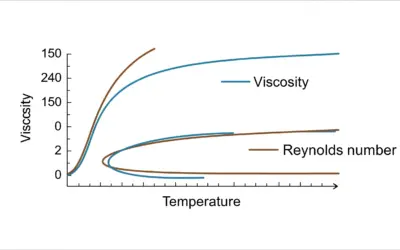
0 Comments